
views
Gathering Your Materials
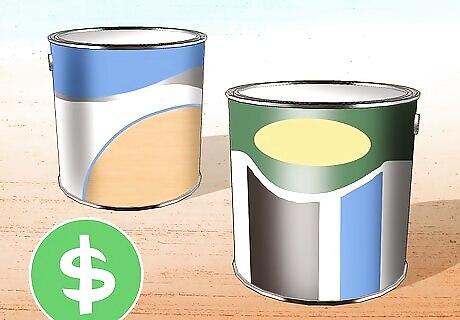
Buy paint and primer. When buying paint and primer, you need to take the use of the finished surface into consideration. Will the plywood be used for art? Will the finished product be a painted plywood floor? Picking paint and primer that is created for the finished purpose of your project will add to the longevity of the product. If you are painting plywood to make art, consider purchasing acrylic primer and paints. These are water-based artists' paints that can be used to create beautiful and detailed images on wood. If you are painting plywood to use it as a surface in your home, such as a painted plywood floor, you will need a more heavy-duty paint. Pick an acrylic latex paint or an oil-based paint that is made for the intended purpose. If you have a small project that requires a very smooth finish, consider buying spray paint.
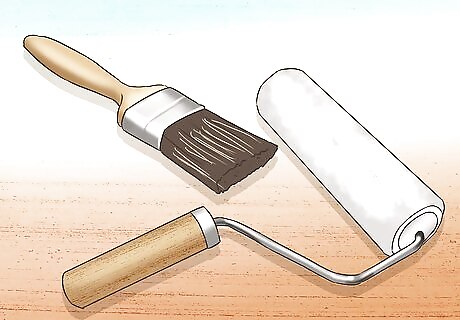
Choose a paint brush or roller. To get a quality paint job on your plywood, you should buy quality brushes or rollers. These are available at hardware and home improvement stores. Pick a brush or roller that is made to paint a smooth surface and that is compatible with the type of paint and primer you purchased. If you are using spray paint for your project, you won't need brushes or rollers. Whether you get a brush or a roller depends on your preference. If you intend to paint a large surface, then a roller will work well because you can cover a larger surface quicker. If you need to do detailed painting, a brush will typically work better than a roller. For some paint jobs you will want both a roller and a brush. The roller can paint the larger area and the brush can be used to fill in the edges.
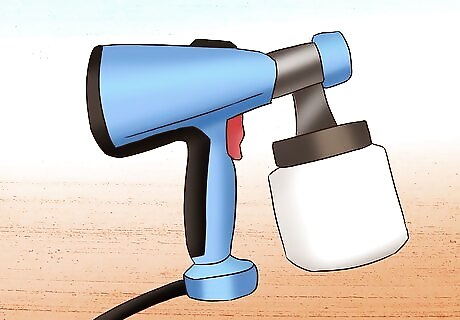
Consider using a paint sprayer for a large job. If you need to paint a large area, such as the walls of several rooms, you may want to opt for a paint sprayer. To use a sprayer you will need to rent or purchase the equipment from your local hardware or home improvement store. The sprayer should come with instructions for its proper use. When using a sprayer, it is important to mask off all surfaces that you do not want painted.
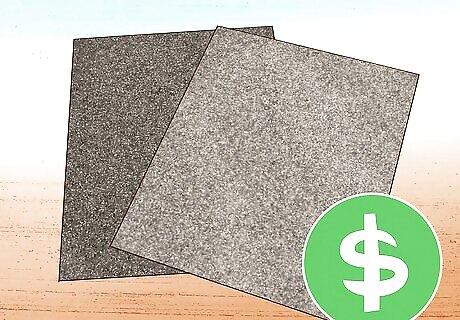
Purchase sandpaper. When painting plywood, it's important to prepare the surface by sanding it. This removes many imperfections in the wood and helps to guarantee that you will have a smooth finished surface. Buy fine grit sandpaper, either 220 or 180. Also, get coarser sandpaper, 80 or 100 grit, if your plywood surface is rough and you want to sand it down smooth. Sandpaper is available at all hardware stores and big box home improvement stores.
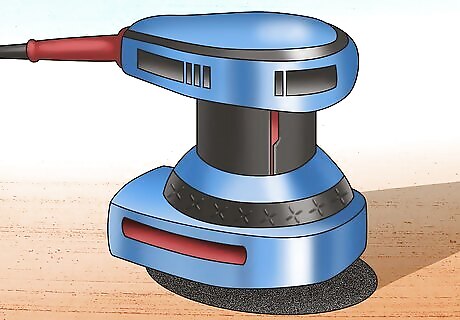
Make sure you have an appropriate sanding tool. You can either sand your plywood by hand with a sanding block or use an electric sanding tool, such as an orbital sander. If your plywood is small, hand sanding will usually work fine. If you have a large area to sand, you should use an electric sander. If you are sanding a very large area, such as a room with plywood flooring, then you may need to use a commercial sander. Renting a floor sander, for example, may be the best solution.
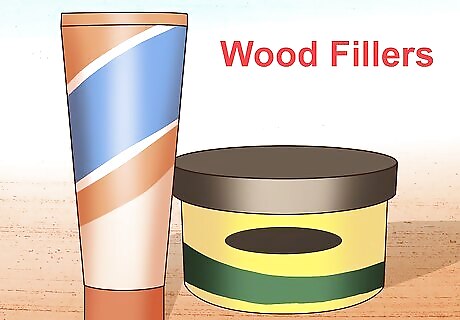
Buy hole filler, if necessary. If your plywood has imperfections on its surface that cannot be sanded out, you may need to fill them with hole filler. It is a malleable product that is smoothed into holes with a putty knife and then sanded smooth once it is dry. Make sure to get a product that says it can be used on surfaces that will be painted, although most hole fillers will be compatible with paint. Since you will be painting over the plywood, the discoloration caused by using hole filler will not affect your final product. However, hole filler should not be used on plywood projects that will have an unfinished or sealed surface, as the color of the filler tends to stand out.
Preparing the Surface
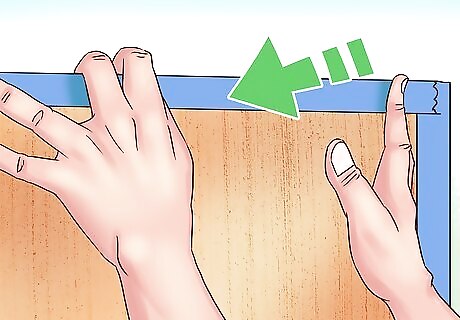
Mask off areas that you don't want painted or covered in dust. If you are painting plywood indoors, you should mask off areas that could get paint or dust on them accidentally. Use a combination of painter's tape, plastic sheeting, and drop cloths to protect the area around your project. For instance, cover areas with plastic sheeting that could get sprayed if you are using a paint sprayer. If there are small areas that could be accidentally painted, use painter's tape to protect them.

Fill any holes. Before sanding the plywood, fill any holes that will cause the finished surface to be imperfect. Look for obvious holes to fill, but also feel the surface of the wood for small holes that can be filled. These may not show up very clearly on the unpainted surface of the plywood, but will likely be noticeable once the wood is painted. Follow the directions on the wood filler packaging. Typically wood filler requires that you apply it with a putty knife and then allow it to dry before sanding it smooth. There are some situations when you won't need to fill the holes and imperfections in your plywood. If you are not interested in having a really smooth surface, feel free to skip the filler. The paint will still stick to an imperfect piece of plywood, the finished product just won't be as smooth.

Sand the plywood. If you want a smooth surface after you paint, sand the plywood thoroughly before you start painting. Start with a rougher sandpaper, such as 100 grit, if the surface you are starting with is rough. This will break down the large imperfections. Then change out your sand paper to a fine grit of 180 or 220 to give the overall surface the smoothest finish possible. If the plywood is already relatively smooth, you can simply use the fine grit sandpaper. Because plywood is made of many thin layers of wood, it's possible to sand too long or hard and break through to a lower layer of wood. Use caution when sanding and err on the side of caution when taking off a lot of the surface. If you are not interested in having a smooth finished product, you do not need to sand the plywood until it is completely smooth.
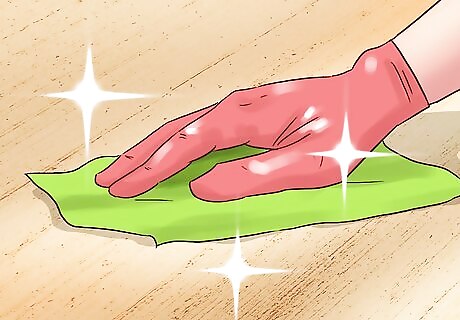
Remove any dust from the surface. Once you've finished sanding there will be a coat of wood dust all over your plywood. You need to remove it to avoid negatively impacting your paint job. If you have created a lot of dust, use a vacuum to clean it up. Then use a dry cloth, such as a microfiber cloth, to remove any dust that remains. There are also tacky cloths sold at most paint and home improvement stores that are made to remove this dust.
Priming and Painting with a Brush, Roller, or Sprayer
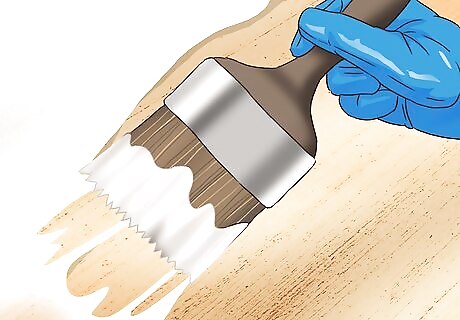
Paint the edges with primer. If you are painting a floor or another surface that needs detailed work on the edges, use a brush for those areas. A paint brush will give you more control and detail than a roller or a sprayer. Painting detailed edges can be done with a steady paintbrush, but you may also want to tape off the edges to make sure your work is tidy. Leave the tape in place once you have primed so that it can be used for your finish coats as well. Paint a 3–4 inches (7.6–10.2 cm) border along the edges of the plywood. This will give you plenty of clearance from the edges when you come in with your roller or sprayer.
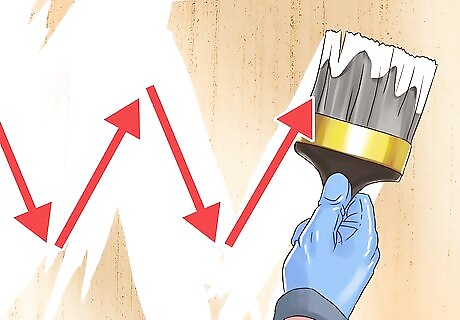
Prime the surface by using smooth, overlapping strokes. Priming plywood helps to seal the surface and ensures that the paint adheres to the plywood well. Paint the entire surface with the primer, making sure that all areas are evenly covered. The best way to ensure complete coverage no matter what tool you are using is to do long, even movements that overlap each other. Basically, repeatedly make a "w" with the brush, sprayer, or roller, so that the strokes overlap each other. This will even out the edges of each stroke, which tend to collect more paint. Be sure to follow the directions for the primer that you are using. The directions typically include the temperature that the paint should be applied at and how long you should allow it to dry before adding coats of paint on top of it.
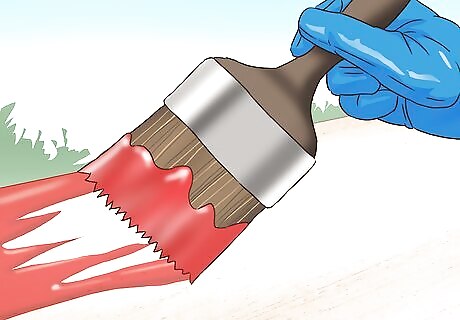
Cut in with the paint. As you did before with the primer, you should paint the edges of the surface with a brush before doing your general coat of paint. Take your time and get the detail you want before using your brush, roller, or sprayer on the rest of the surface.
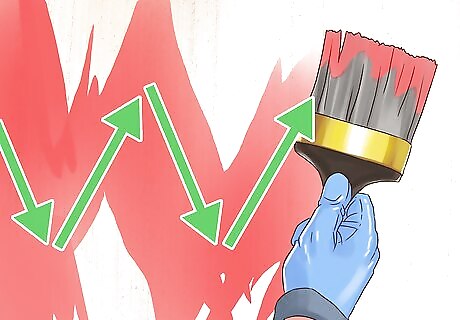
Apply the first thin coat of paint. Once the primer is completely dry, you can apply your first coat of paint. Like with the primer, be sure to cover the entire surface with a consistent, thin coat of paint. When applying the first coat, you don't have to worry about making sure that the primer isn't visible underneath. This is just the first coat and it's better to have thin coats than thick coats, even if you can see the primer at first.
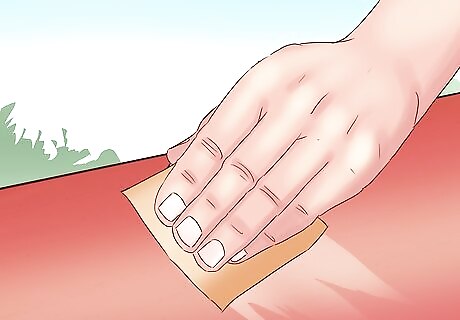
Sand between each coat. Giving the painted surface a very light sanding between coats will make your final product more smooth. Use a new piece of 180 or 220 fine grit sand paper and lightly rub it over the surface once the paint is totally dry. This will remove any imperfections that have occurred as you painted. After sanding between coats, remove any dust created. Use a dry cloth or your vacuum to get rid of it.
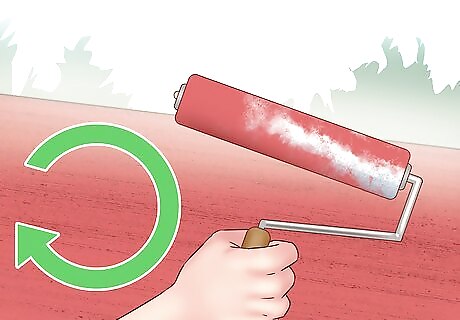
Apply additional coats. In order to get a smooth and strong final surface, it's best to apply several thin coats of paint. This is especially true if your final surface will get a lot of wear, such as if you will be walking on it. Be sure to let the paint dry thoroughly between coats of paint. Consult the container for usual drying times and test an inconspicuous edge for dryness after that amount of time has elapsed. This will give you a harder and smoother final surface. Applying multiple thin coats allows each coat to become hard and dry, as opposed to thick coats that tend to remain slightly pliable.



















Comments
0 comment